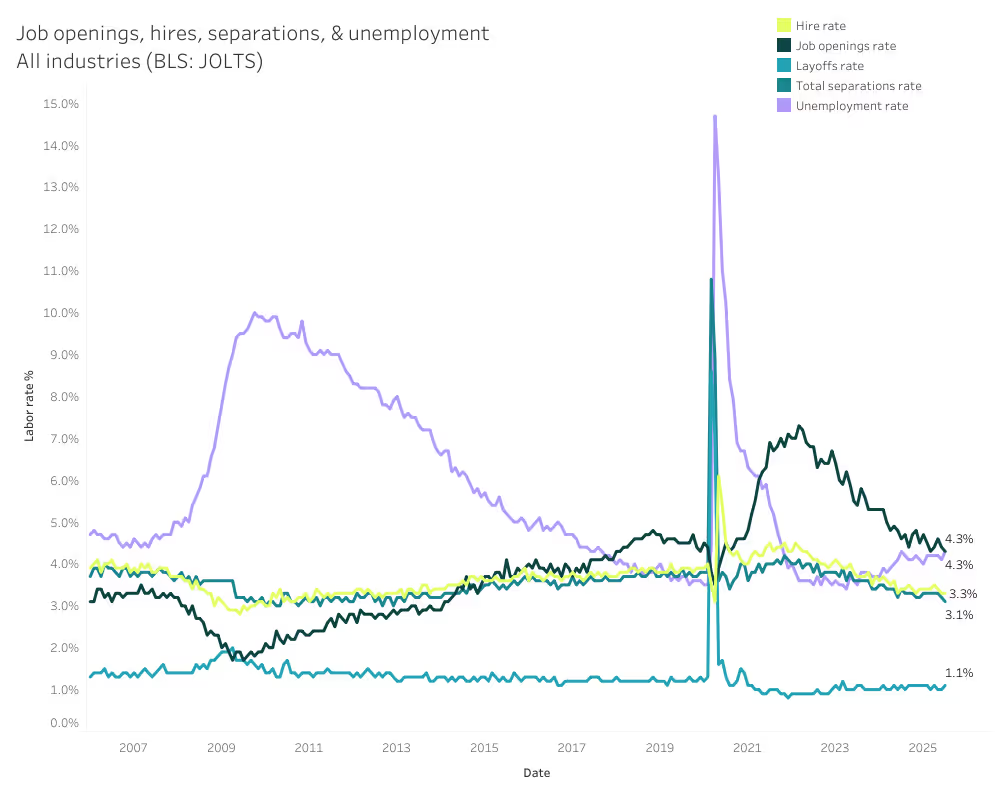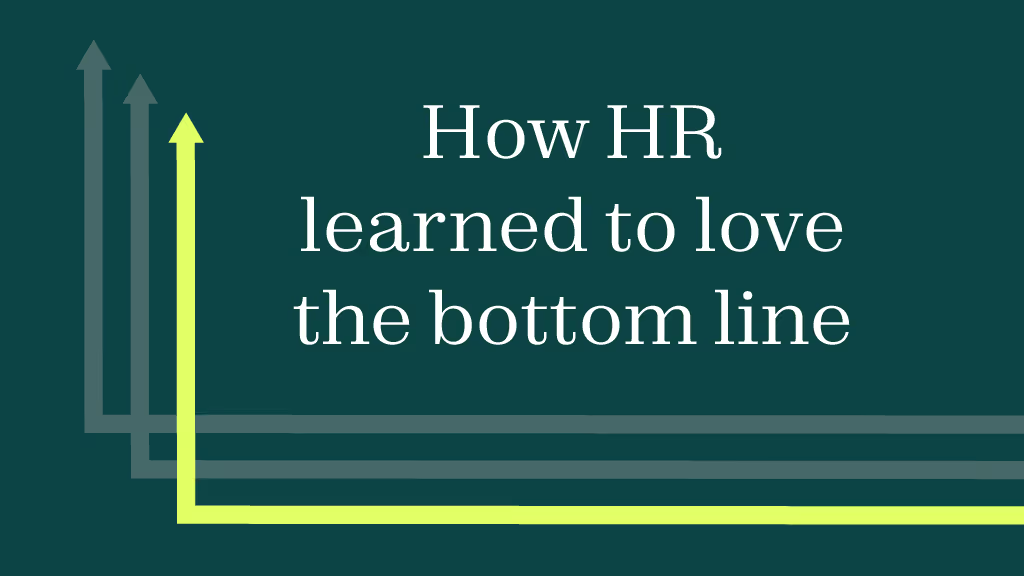True story.
During a budget review with leadership, a CHRO we know almost received the pink slip.
The CEO seemed distracted. Midway through the meeting, she picked up head and asked a question.
“Why are we hiring three Account Executives?”
“Well,” our friend stammered, “Jim [the CRO] asked for them.”
“But what’s the business case?”
Our friend couldn’t answer. He didn’t have an answer. Because he didn’t fully understand how his company made money.

If you asked him about employee sentiment, he had boatloads of data. He could rattle off stats about engagement with ease.
The business case for compensation decisions? He had no clue.
We see this all too often. HR hands off hiring decisions to managers. People managers are given a headcount and go out and hire as many “heads” as their budget allows.
The problem with this scenario?
HR teams have a new mandate: focus on productivity. Do more with less. Automate with AI.
Here’s what leadership sees: bloated payrolls and compressed margins. They wanted you on that “productivity project” yesterday.
In some cases, increased productivity is a euphemism for downsizing. It doesn’t feel good.
But some companies are overstaffed precisely because we reward managers for adding headcount, not for justifying it.
It’s also partly a hangover from the hiring binge in 2021 and 2022.
The pattern looked like this:
Cost-per-acquisition climbing? Hire a Project Manager to “optimize Marketing workflows.” Can’t tie operational spend to revenue? Add a Business Analyst to “connect the dots.”
This isn’t productivity or business efficiency — it’s reactive hiring and chaos. We’ve designed a system where each hire makes sense in isolation but wasn’t built for scalable performance.
How do we rectify this issue?
There’s the ham-handed approach favored by some tech moguls: Cut first and figure it out later. While this strategy may work for Mom & Pops, once you reach a certain size, there are too many jobs to think about.
The smarter play: start with the metrics your CFO reviews every quarter and then work backwards to identify which roles actually move the numbers.
Which positions directly impact revenue? Which roles reduce customer acquisition costs? Which functions will increase margins?
And critically, how much of your growing headcount is because “Jim asked for them” rather than a defensible business case?
The business metrics HR needs to know
Leadership doesn’t fund “compensation strategies.” They back strategies that help them hit revenue targets.
Connecting your comp initiatives to bottom-line business metrics isn’t just about leadership buy-in. As our story illustrated, it’s about survival.
Core business metrics
Revenue
Sales before subtracting for costs, or what you learned in high school Economics.
Compensation use case
Incentive programs (like bonuses or commissions) should be tied to how you make money. If revenue is generated through one-time sales, reward volume. On the other hand, if you have a recurring revenue model, you’ll want an incentive program more closely tied to customer retention.
COGS/COS
The expense to deliver a product or service.
Why it matters to your compensation initiatives?
In most businesses, labor is the largest driver of COGS (Cost of Goods Sold) or COS (Cost of Service). When HR approves headcount without considering COGS/COS, they’re directly impacting gross margins.
Gross margins
Revenue minus COGS/COS, given as a percentage.
Why should HR care?
Gross margin is the cornerstone of operational efficiency. Your compensation strategy can compress margins (generally bad) or improve them (generally good).
Customer Acquisition Cost (CAC)
The cost of acquiring a new customer.
How does CAC impact compensation?
The structure of roles, hiring costs, and variable pay (such as sales commissions) all impact CAC variance.
Return on Investment (ROI)
Projected business outcome relative to cost
Why HR teams need to nail this metric.
Every (and, yes, we mean every) compensation initiative needs to deliver a measurable ROI. What’s the business case for your decisions? For compensation, this translates into productivity and business performance.

Savvy HR practitioners will thread these business metrics into their compensation proposals and budgets.
Want to really impress leadership? Talk about other business metrics such as time to productivity or labor costs as a percentage of revenue.
The five habits of business-fluent HR professionals
1. Their Spidey-senses are always tingling whenever leadership talks
Did your CFO just say “compressed margins”? Did your CEO mention cost control at the latest board meeting? That’s your cue to start scrutinizing your spending.
2. They meet with Finance early and often
Whether margins are compressing or expanding, they understand Finance’s perspective long before putting together any proposals.
3. They have KPIs for everything
Your compensation initiatives need to be measurable. Full stop.
4. They take the time to learn business jargon
We’ve given you some basic concepts to bring to your budget. Even if it’s awkward at first, with practice you’ll get better at building a business case C-suite understands.
5. They understand what matters to their workforce
Compensation is all about tradeoffs. Did you increase your 401k match this year? Does this mean you have to be more conservative with your increase budget? With your finger on the pulse of employee sentiment, you might discover mutually beneficial tradeoffs that increase engagement while curbing costs.
Now more than ever, your comp plans need to scream business results and increased productivity.
With economic uncertainty looming as a big, giant question mark on the horizon, many HR practitioners are threading the needle between leadership demands for budget discipline and keeping their talent franchise intact.
How HR’s role is changing
Many HR practitioners are operating under a different mandate than in years past.
Hiring is down, which is evident in the most recent JOLTS data.

Planned salary increases for 2026 have declined as well. With leadership looking over your shoulder and scrutinizing every pay decision, one perspective puts HR in peril.
You can’t achieve the productivity gains demanded by your CEO. Layers of support services keep getting added, while tech tools are never fully adopted by departments.
If it hasn’t already happened at your org, there’s going to be a massive push for AI implementation.
There’s an irony to C-suite's desire to do more with less. You’re focused on making every comp dollar work harder to boost margins. In the background, there’s a bigger business metric not showing up on your company’s P&L: persistent labor shortages.
While hiring grounds to a halt and unemployment climbs, we’re also facing an aging workforce and immigration policies that make AI adoption and increased productivity existential concerns.
As Cali Yost, a future-of-labor expert, explains “we are on the precipice of an incredibly contracting workforce.”
As Baby Boomers and Gen Xers exit the labor market, Gen Z and Alpha simply aren’t large enough to replace them.
Squeezing more juice from an increasingly small orange isn’t just about immediate profits — it’s an imperative for corporate survival.
You’ve been given a challenge: increase productivity. Make the technology work. In the near term because the business climate has soured. But in the medium to long term because the labor supply is drying up.
HR has the most important role in this shifting paradigm. Why? Well, because it’s our job to build and advise on people processes.
Productivity doesn’t happen in a vacuum. It’s built through thoughtful hiring, development, leadership, and rewards — all in HR’s provenance.
The question: where will you find the talent to scale? To make your organization leaner and meaner whether you’re up against budgetary pressures or a demographic cliff?
You can’t simply call up your friend in Talent Acquisition and ask for a dozen brilliant AI Engineers to generate productivity. They don’t exist yet — at least not at a price you can afford.
You also can’t just start drastically cutting your comp budget in the vague hope it will work itself out. While the mandate is clear (less is more), retaining the talent you need may become increasingly expensive, especially if inflation keeps rising even as hiring sputters.
The one thing you don’t want to do? Sit on your hands until consultants come in and hack your workforce in half.
Instead, embrace the productivity mindset and learn the language of business outcomes. Partner with IT early, shaping the tools around your needs, so you’ll have a say in what gets built and bought.
The payoff? A more agile HR function that delivers bottom-line business results, a stronger career path, and the opportunity to shift your company’s focus from filling seats to driving productivity.






